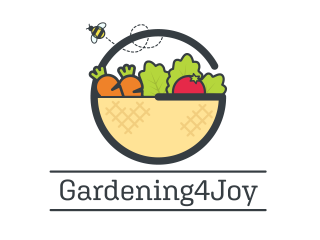As I sit here writing, a gentle rain is falling outside. Normally, I’m not someone who loves the rain—but in the garden, rain becomes something else entirely. In spring, it enhances the garden’s vibrant beauty. It nurtures every plant, softens the soil (making weeds easier to pull), conserves water, washes pests and dust from leaves, and saves time and effort by reducing the need to water. I’m grateful to Mother Nature for the gentle rains of spring.
In this post, I’ll share how I prepare my spring garden here in New Jersey—from using phenological indicators to guide my timing to letting nature self-seed my flower beds. Whether you’re just starting your spring garden or looking to improve your approach, I hope you’ll find some inspiration here.

Using Phenological Indicators in Your Spring Garden
Spring in the garden is a time of rapid change, and nature provides its own calendar. In New Jersey gardens, certain plants act as phenological indicators—natural cues that tell us when the soil is ready for specific gardening tasks.
Here are a few examples:
Using Phenological Indicators in Your Spring Garden
Spring in the garden is a time of rapid change, and nature provides its own calendar. In New Jersey gardens, certain plants act as phenological indicators—natural cues that tell us when the soil is ready for specific gardening tasks.
Here are a few examples:
- Blooming forsythias mean the soil has reached 55°F, which is the perfect time to apply a pre-emergent herbicide to your lawn.
- Daffodils in bloom indicate it’s safe to plant cool-season crops like lettuce, spinach, and peas.
- Magnolia blossoms suggest the ground is thawing—time to cut back ornamental grasses and perennials that overwintered.

The Power of Self-Seeding Flowers in Spring
In recent years, I’ve left my garden beds a bit messy in the fall—and for good reason. Many flowers, such as echinacea, go to seed, providing vital food for birds and small animals through the winter. There’s also the joy of discovering self-seeded surprises in the spring.
This year, I’ve spotted seedlings of sunflowers, bachelor buttons, lupines, and echinacea. I fully expect more as the weather warms. And when the cosmos reappear, scattered in unexpected places, it’s always a delight. The power and persistence of nature never cease to amaze me.

Spring Vegetable Garden Preparation Tips
While it’s tempting to simply admire the beauty of a spring garden, the season also calls us to action. Spring is about cleaning up, starting fresh, and giving plants a healthy head start.
It can feel overwhelming, so I try to pace myself—working in 45-minute chunks with breaks in between. (Does it always happen that way? Not exactly—but I try!)
Much of my effort goes into preparing the vegetable garden, which includes sixteen beds of various sizes. Each bed is refreshed with compost or new soil, then aerated with a broad fork to loosen the earth gently.
One of the things I love most about vegetable gardening is its built-in seasonality. Not everything is planted at once:
- Cool-season crops like cabbage, lettuce, peas, and broccoli can be planted well before the last frost.
- Warm-season crops like tomatoes, peppers, basil, cucumbers, and eggplant need to wait until after the frost danger has passed.
This natural pacing keeps things manageable and helps prevent burnout.
Final Thoughts on Gardening in Spring
Spring in the garden is a season of transformation—both for the garden and the gardener. Take time to notice the small changes, welcome the surprises, and enjoy the satisfaction that comes with working in sync with the earth.
Happy gardening!
Additional Information
- Creating and maintaining an organic vegetable garden – Part One
- Creating and maintaining an organic vegetable garden – Part Two
- How to use floating row cover in your organic garden
- Managing garden pests with an integrated approach
- Companion planting for pest management in the vegetable garden
- Getting started with seeds, 4 secrets for successful seed starting
- Five pieces of planning advice for the vegetable gardener







 Please check your email to confirm subscription.
Please check your email to confirm subscription.
No Comments